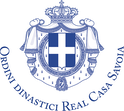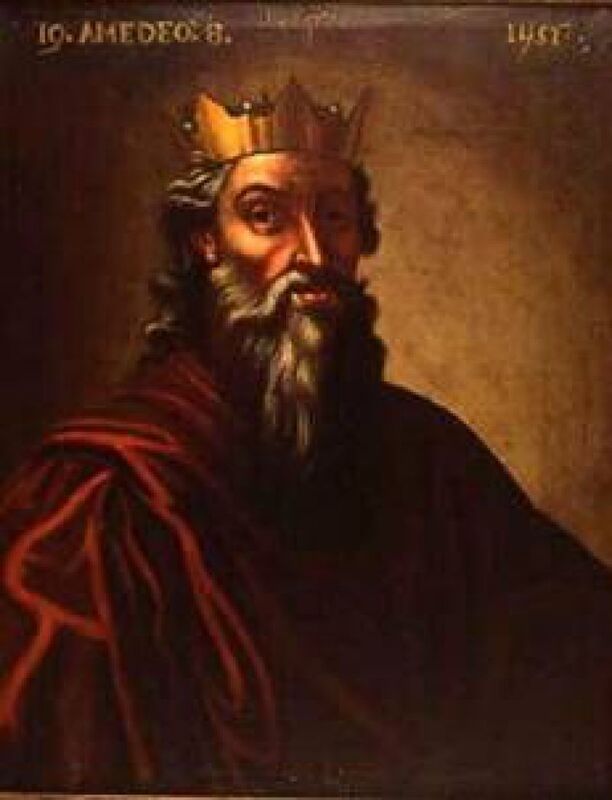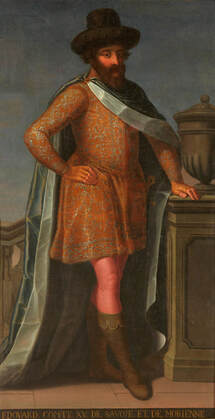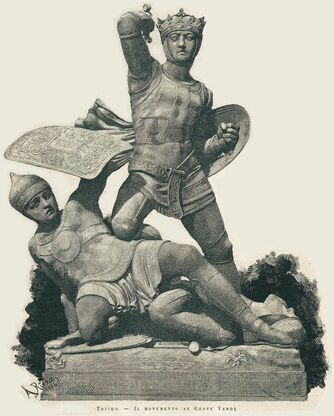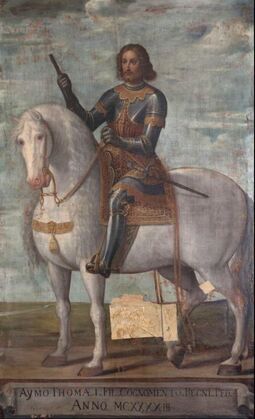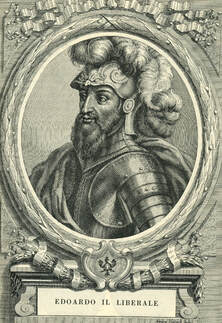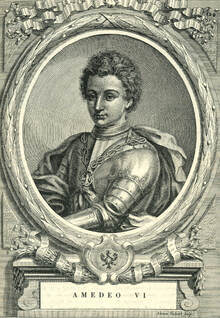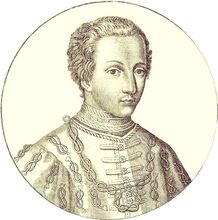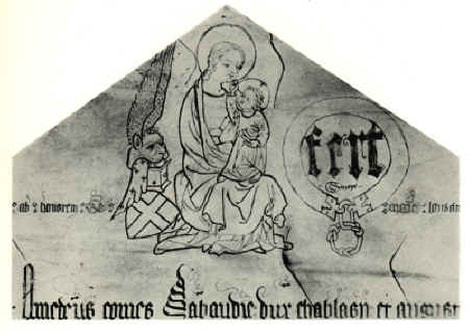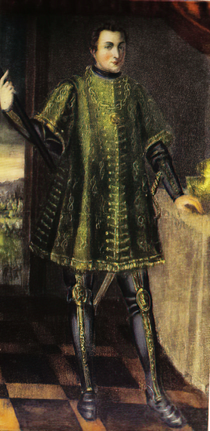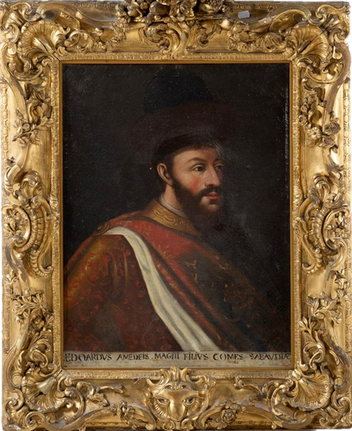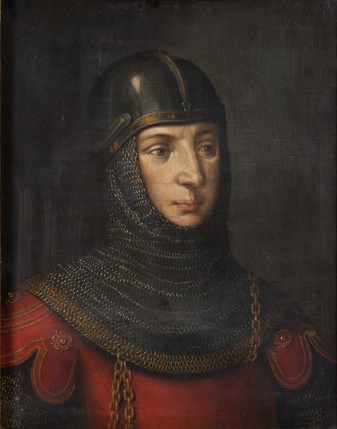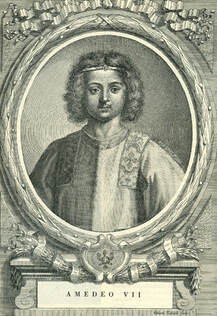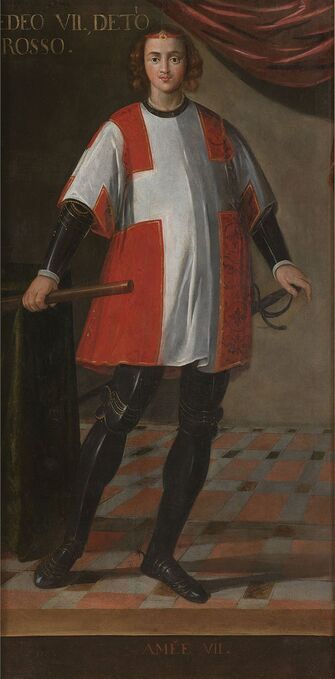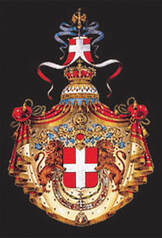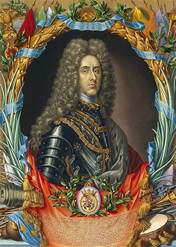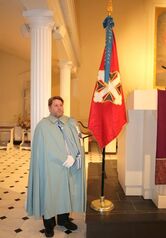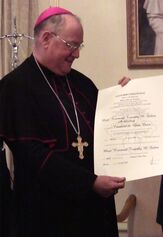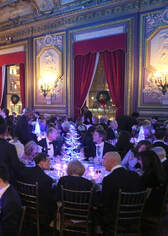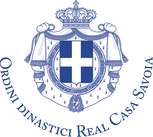American Delegation of Savoy Orders
Consolidation: The Last Counts of Savoy (1323-1415)
|
Amadeus the Great was succeeded by two of his sons. The first, Count Edward the Extravagant (1284-1329), wreaked havoc on the state's finances due to his spending but generally continued faithful to his late father's policies.The Fifteenth Count of Savoy and his wife, Bianca of France, had one child, a daughter, but she was excluded from the succession due to the Salic Law. His reign lasted but six years and, in 1329, he was succeeded by his younger brother, Aimone, as Sixteenth Count of Savoy (1291-1242).
As extravagant as his brother had been, Aimone was also cautious and sensible, and earned the appellation of "the Peaceful". By sheer strength of character and leadership, and without force of arms, Aimone was able to pacify a rebellious Geneva and steer his country clear of the ravages of the Hundred Years War plaguing France. Neutrality in the Anglo-French wars and peace with the Empire brought prosperity to the Savoy state and replenished its coffers depleted by Count Edward. The rule of law was codified and a Chancellery created to administer justice in the Count's name. He lavished attention on the Abbey of Hautecombe and built the ornate Chapel of the Princes as the final resting place for members of the House of Savoy. It was here that he was interred next to his ancestors. |
Tomb of Count Aimone and Countess Consort of Savoy Yolande de Montfort in Hautecombe Abbey
|
Amadeus VI (1334-1383), the "Green Count", succeeded his father as Seventeenth Count of Savoy at the tender age of nine. His cousin, Count Louis II of Vaud acted as Regent until his majority. The young count's preference for green livery at tournaments accounts for his sobriquet.A bold knight and soldier, he loved adventure and tournaments as much for his prowess as for the excitement. The talents and passions of the young man were not confined to the tournament grounds or the battlefields. He showed a genuine concern for the less fortunate of Savoy and, by decree, instituted a system of legal assistance to the poor.
Among his lasting accomplishments was the establishment, in 1362, of the Order of the Collar, which eventually became known as The Order of the Most Holy Annunciation (Santissima Annunziata), one of Europe's oldest and most prestigious knightly orders still in existence. It became the highest chivalric order in Savoy. Those upon whom the accolade is conferred receive a gold collar with a suspended medallion emblem of the Holy Annunciation. The insignia is never suspended from a ribbon. Those who receive the decoration are automatically styled "cousins" of the sovereign. Amadeus VI and his successors became Grand Masters in perpetuity of this Dynastic Order. |
Royal House |
History |
Orders |
Members |
News & Events |
